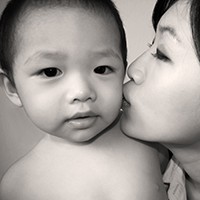Last updated: October 11 2016
Beef Up Your 2017 Canada Child Benefit Now

It’s unclear whether Canadians are really getting more from their Canada Child Benefit in 2016 over the Universal Child Care Benefit and family income splitting. That’s the subject of our October poll. However, at this time of the year there is lots a tax specialist can do to make sure your family maximizes the credit.
Here’s how the Canada Child Benefit works: First, it’s a refundable credit based on family net income. Specifically, the new Canada Child Benefit provides a maximum benefit of $6400 per child under the age of 6, and $5400 per child age 6 to 17.
But it’s income tested. That means we have to watch the clawback zones and stay under them. Problem is, that’s complicated:
| Family Net Income | |||
|---|---|---|---|
| Number of Children | Under $30,000 | $30,000 to $65,000 | Over $65,000 |
| 1 | 0% | 7.0%* | $2,450 + 3.2%** |
| 2 | 0% | 13.5% | $4,725 + 5.7% |
| 3 | 0% | 19.0% | $6,650 + 8.0% |
| 4+ | 0% | 23.0% | $8,050 + 9.5% |
* % of income over $30,000 **% of income over $65,000
How much you ultimately get in the benefit year July 2017 to June 2018 will depend on your family net income in 2016. You’ll have to file a tax return and make sure the number on Line 236 is as low as possible. Here are the types of provisions that will help you get more from the CCB:
- An RRSP contribution
- Professional or union dues
- Child care expenses
- Moving expenses
- Employment expenses
- Carrying charges on your investments
You can see that RRSP planning for families is extremely important as clawback zones can bring marginal tax rates over 50% for taxpayers with income under $65,000. Here’s what we mean:
Example: RRSP Contribution to Increase CTB
Bruce and Joan have four children, all under age 6. Joan stays at home and Bruce’s net income is $60,000. The family’s Canada Child Benefit for the year is $18,700. His tax bill is $8,946. If Bruce were to make an RRSP contribution of $5,000, his net income would be reduced to $55,000 which would, in turn, increase his Canada Child Benefit to $19,850 and his tax bill would be reduced to $7,463. The family gets an additional $1,150 CCB and saves $1,483 in taxes. By making an RRSP contribution of $5,000 the family’s wealth increases by $2,633. That means the cost of not making that RRSP contribution is $2,633 or 52.66% of the contribution.
To receive the CTB, you must be either a Canadian citizen, an Indian, a permanent resident, a refugee (protected individual), or a temporary resident who has lived in Canada for at least 18 months (and is legally allowed to continue to live here).
 |
Currently, individuals may apply for CCTB and UCCB as far back as to the introduction of programs. However, other income-tax based credits are subject to a 10-year limitation. After 2016, retroactive application of UCCB and CCB will also be subject to the 10-year limitation. (In fact, that’s year-end tax planning tip to be aware of in general – be sure to recover any missed tax credits or deductions within the 10-year window.)
Unfortunately, there is no non-refundable tax credit for minor children for those who do not qualify for the income-tested benefits. This was removed when the previous government introduced the Universal Child Care Benefit enhancements and the Family Tax Cut, both of which have since disappeared.
Other non-refundable tax credits will soon be removed as well: the education/textbook amounts are eliminated, as is the refundable children’s fitness credit, starting in 2017.
Check out these family tax changes with your tax specialist now, to see their real dollar effects on your family budget.
©2016 Knowledge Bureau Inc. All Rights Reserved.





